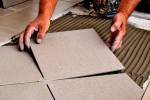Mind the gap if doors stick
Q: I have a problem with an interior door. It doesn't latch. Although the door swings OK, it seems to bind when I close it. I have to throw my weight against it to get it to close. Is there a simple fix for this?
A: Throwing your weight against the door will do nothing but cause more damage. You need to look at the door when you get it closed and analyze the problem.
Look at the gap between the door and the frame. It should be uniform along each side of the door.
It sounds like the door is contacting the strike jamb (the vertical piece of wood that the door latches into), the head jamb or the floor. It is likely that you have a hinge problem, but it also may be that the door or frame is racked or warped. The gap tells the story.
You can look at the door and frame and see wear spots from the two contacting each other. If the door binds on the strike jamb, look at the hinges. Open the door and pull up and down on the doorknob. Look for movement in the hinges, particularly at the top hinge.
If you can move the door in this fashion, the hinge needs to be tightened either between the hinge and the jamb or between the hinge and the door. It may be the screws won't bite into the wood, which is an easy fix.
If the hinge is loose on the jamb side, you can use a longer screw to reach the framing behind the jamb. If the hinge is loose on the door side, or if you don't want to bother with the longer screw, you can glue a golf tee into the hole and cut it off flush with the surrounding wood. Drill a pilot hole after the glue dries and reinstall the hinge.
If the door still binds on the strike side, you may have a damaged hinge. You can replace the hinge or bend it back into shape.
By moving the fingers of the door-side hinge toward the lock, you will narrow the gap on the hinge side and widen it on the strike side.
To reshape the hinge, use channel locks or a crescent wrench and bend the fingers on the door side of the hinge. Pull the hinge pin so that it sticks in only the top finger.
Bending the hinge will often scratch it, so protect it with a rag before applying the wrench. Bend the fingers slightly in or out until you get the right fit and reinstall the hinge pin.
If the door is binding on the hinge side and the gap along the jamb is uneven, you can try the hinge-bending technique or add shims underneath the hinge. The binding usually occurs on the bottom hinge because it is under constant compression.
Remove the screws that hold the hinge to the jamb.
Cut several strips of cardboard, insert one or two behind the hinge and then reinstall the screws.
Test the door to make sure it swings freely. You can add or remove shims if you need to, but the wider the gap you create, particularly on the bottom hinge, the more likely you will cause the top of the door to rub against the head jamb.
When your door is finally able to close without throwing your shoulder into it, check to make sure it latches. All that adjusting may have moved the latch up or down to where it won't enter the hole. Moving or filing the strike plate is the answer.
Swing the door so that it is nearly closed and make a mark on the strike plate where the latch contacts it. Check if the hole in the strike plate needs to be moved up or down.
Try to file the strike plate first. Use a metal file if the adjustment is small. Otherwise, unscrew the strike plate and move it up or down. Use a wood chisel and remove the small amount of wood to keep the strike plate flush with the jamb.
With small adjustments, the screws will wander back into the old holes and the door still won't latch. Use the golf tee trick or stuff some wooden toothpicks in the holes. This will help the screws stay on course and help your door to latch.
— Mike Klimek is a licensed contractor and owner of Las Vegas Handyman. Questions may be sent by email to handymanoflasvegas@msn.com or by mail to 4710 W. Dewey Drive, No. 100, Las Vegas, NV 89118. His Website is www.handymanoflasvegas.com.
























